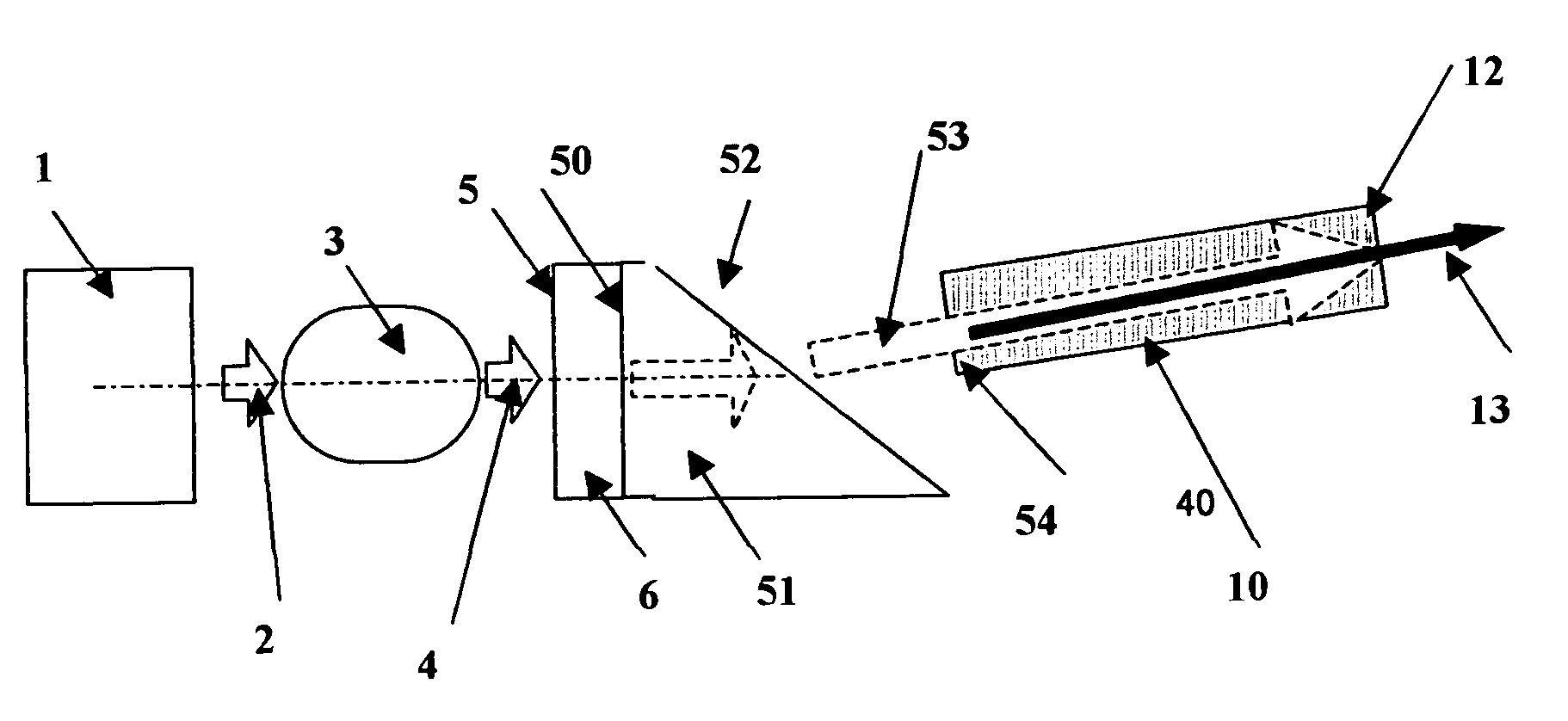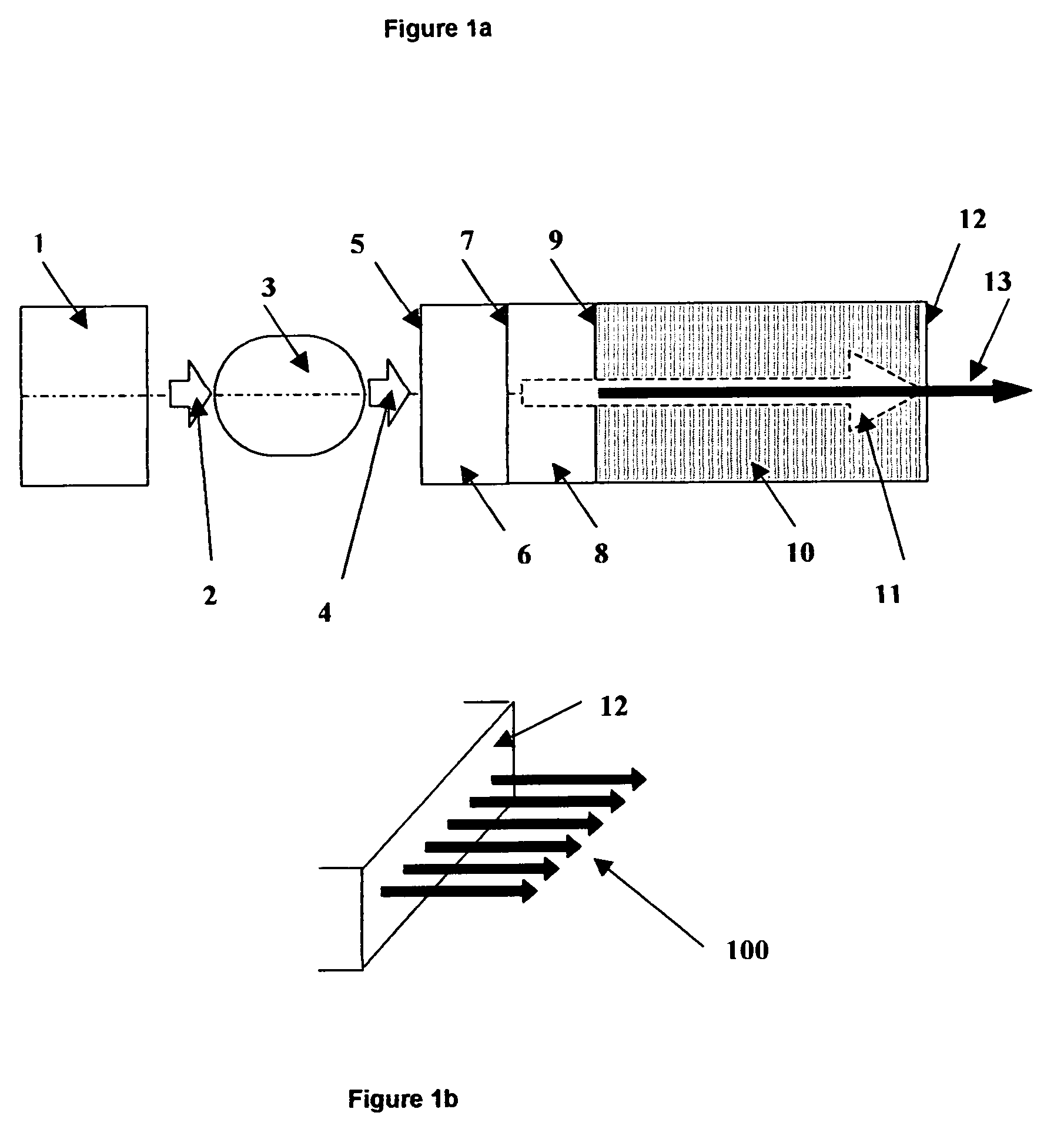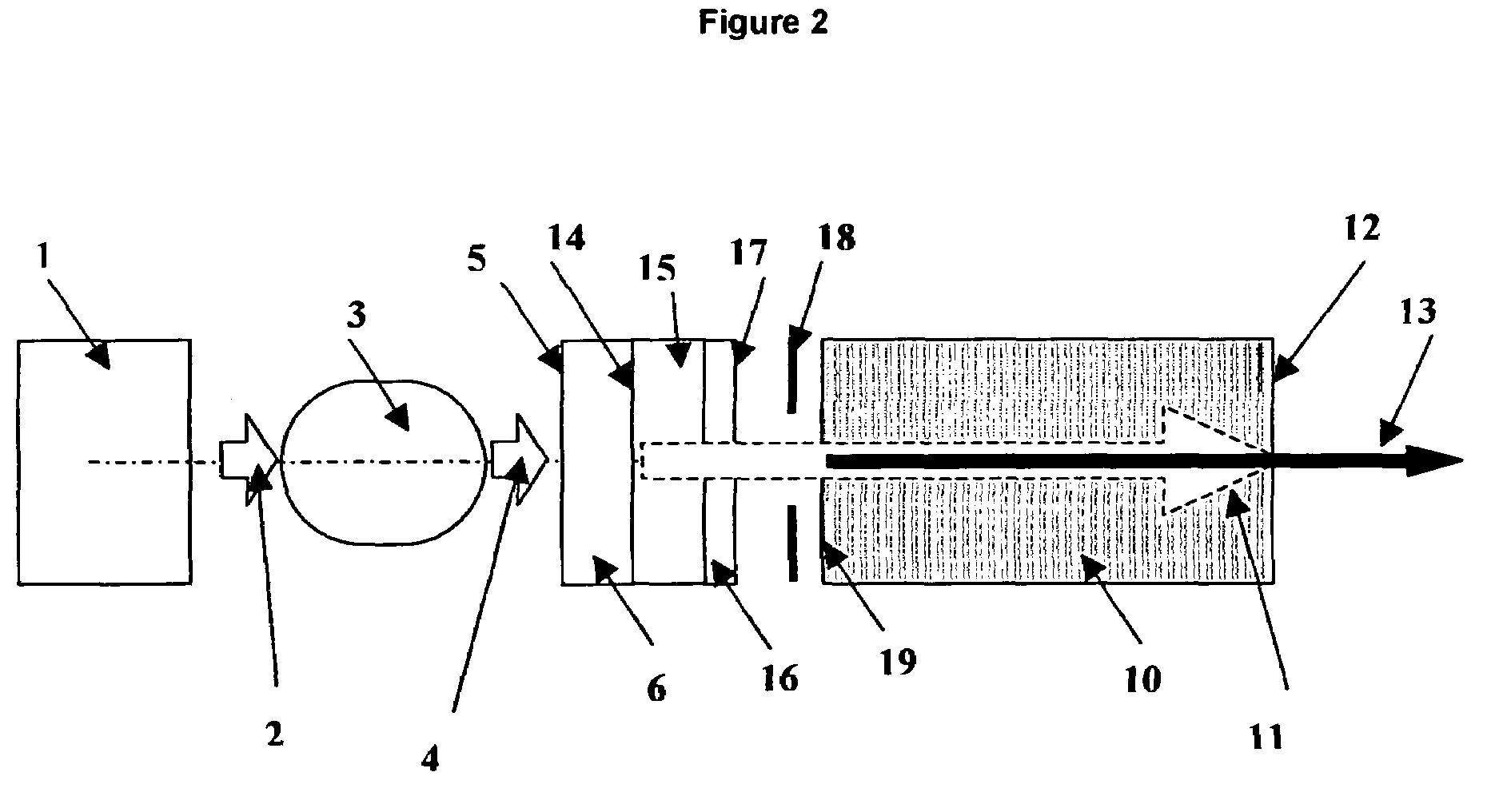Solid-state laser arrays using nonlinear frequency conversion in periodically poled materials
a laser array and periodic pole technology, applied in lasers, laser details, electrical equipment, etc., can solve the problems of shortening the wavelength of the laser, the most difficult green color, and the lack of commercially viable semiconductor materials that can provide direct lasing
- Summary
- Abstract
- Description
- Claims
- Application Information
AI Technical Summary
Benefits of technology
Problems solved by technology
Method used
Image
Examples
Embodiment Construction
[0022]The present invention achieves a high-power, low-cost, visible laser array platform that uses a new family of periodically poled (as opposed to bulk), nonlinear crystals. These crystals include periodically poled, MgO-doped lithium niobate (PPMgOLN), periodically poled, MgO-doped lithium tantalate (PPMgOLT), periodically poled, ZnO-doped lithium niobate (PPZnOLN), periodically poled, ZnO-doped lithium tantalate (PPZnOLT), periodically poled stoichiometric lithium niobate (PPSLN), and periodically poled stoichiometric lithium tantalate (PPSLT), periodically poled MgO and ZnO doped near-stoichiometric lithium niobate (PPMgOSLN, PPZnOSLN), and periodically poled MgO and ZnO doped near-stoichiometric lithium tantalate (PPMgOSLT, PPZnOSLT)
[0023]To illustrate the advantages of such materials for a high-power, low-cost laser array platform, one should first consider their high nonlinearity. The nonlinear coefficient (describing SHG to produce the green wavelength) for PPMgOLN is typi...
PUM
 Login to View More
Login to View More Abstract
Description
Claims
Application Information
 Login to View More
Login to View More - R&D
- Intellectual Property
- Life Sciences
- Materials
- Tech Scout
- Unparalleled Data Quality
- Higher Quality Content
- 60% Fewer Hallucinations
Browse by: Latest US Patents, China's latest patents, Technical Efficacy Thesaurus, Application Domain, Technology Topic, Popular Technical Reports.
© 2025 PatSnap. All rights reserved.Legal|Privacy policy|Modern Slavery Act Transparency Statement|Sitemap|About US| Contact US: help@patsnap.com



